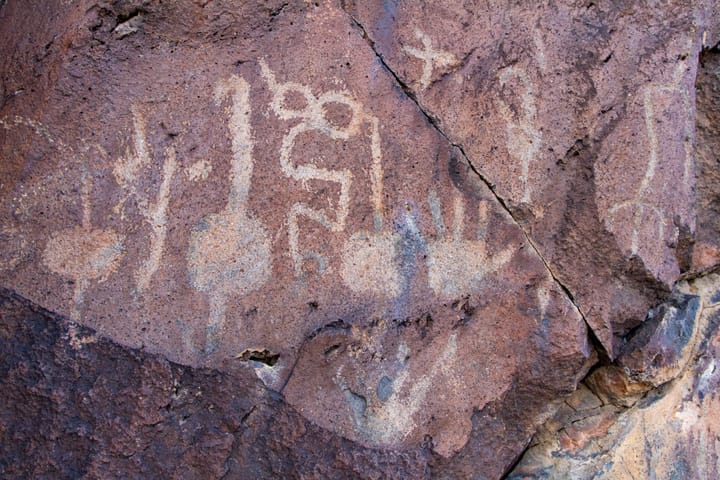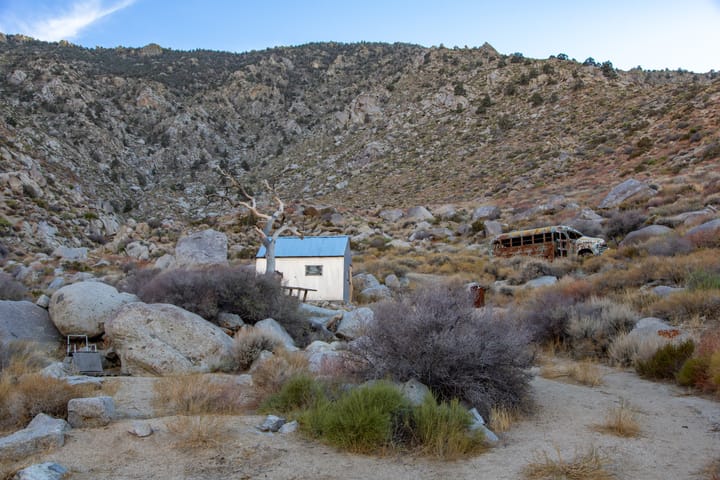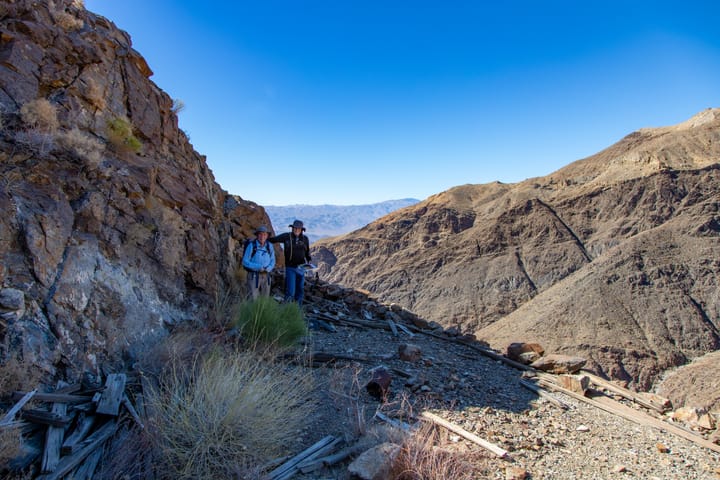Prospectors flooded into the southern Black Mountains during the Greenwater mining boom of the early 1900s, scouring every canyon and wash. The Rhodes Spring area as well as Virgin Spring Canyon saw intermittent activity, with limited productive mining resulting (See Lost Rhodes Mine). The remote location with its subsequent high shipping costs meant that few claims would be profitable to mine.
In March 1908, W.P. Graham, Thomas McMurry, and Lewis Rice established the Graham Mine after they discovered rich gold ore near the head of a wash north of Rhodes Springs. The ore initially assayed at an astonishing $25,000 per ton in gold, but it soon became apparent that they had merely discovered an isolated high-grade pocket. After further exploration and limited excavation, everyone gave up and abandoned the area. The last known activity at the Graham Mine took place in 1974, but that also appears to have been very limited.
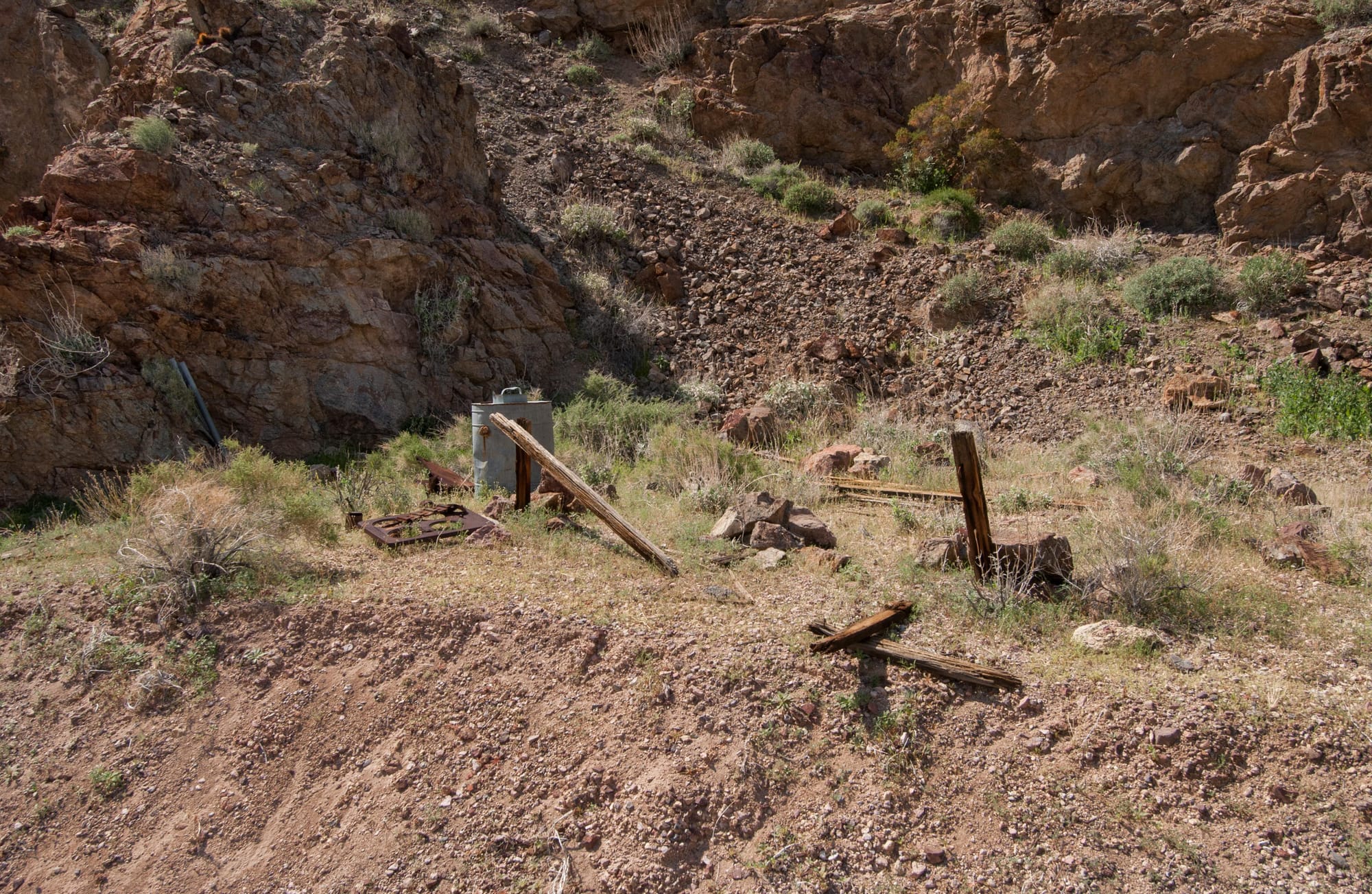
Today, little remains at the Graham Mine. USGS topo maps depict two adits, two shafts, and several prospects. My first visit to the mine was in 2010, then I returned in 2022. I found a small mine camp, two short adits, two shafts, and several prospect holes. I did not have time on either hike to investigate a third shaft, which is near the ridgetop northwest of the camp.
Although there are a few interesting artifacts scattered around the camp and the mines, the main reward in this long hike is the hike itself. The trailhead is easy to reach, although it is somewhat remote. Despite a total climb of about 2,000 feet, the hiking is fairly easy. The hike follows a large unnamed wash between Virgin Spring Canyon and Rhodes Wash, before turning up a scenic side wash for the last mile. This area, and especially this wash, sees virtually no visitors; you are almost guaranteed to have the place to yourself. In good wildflower years, flocks of tourists can be seen in Death Valley and around Jubilee Pass, but few venture into this area, and even fewer get very far from the highway. After a wet winter, the lower half of this wash features some of the finest wildflower displays anywhere in the park.
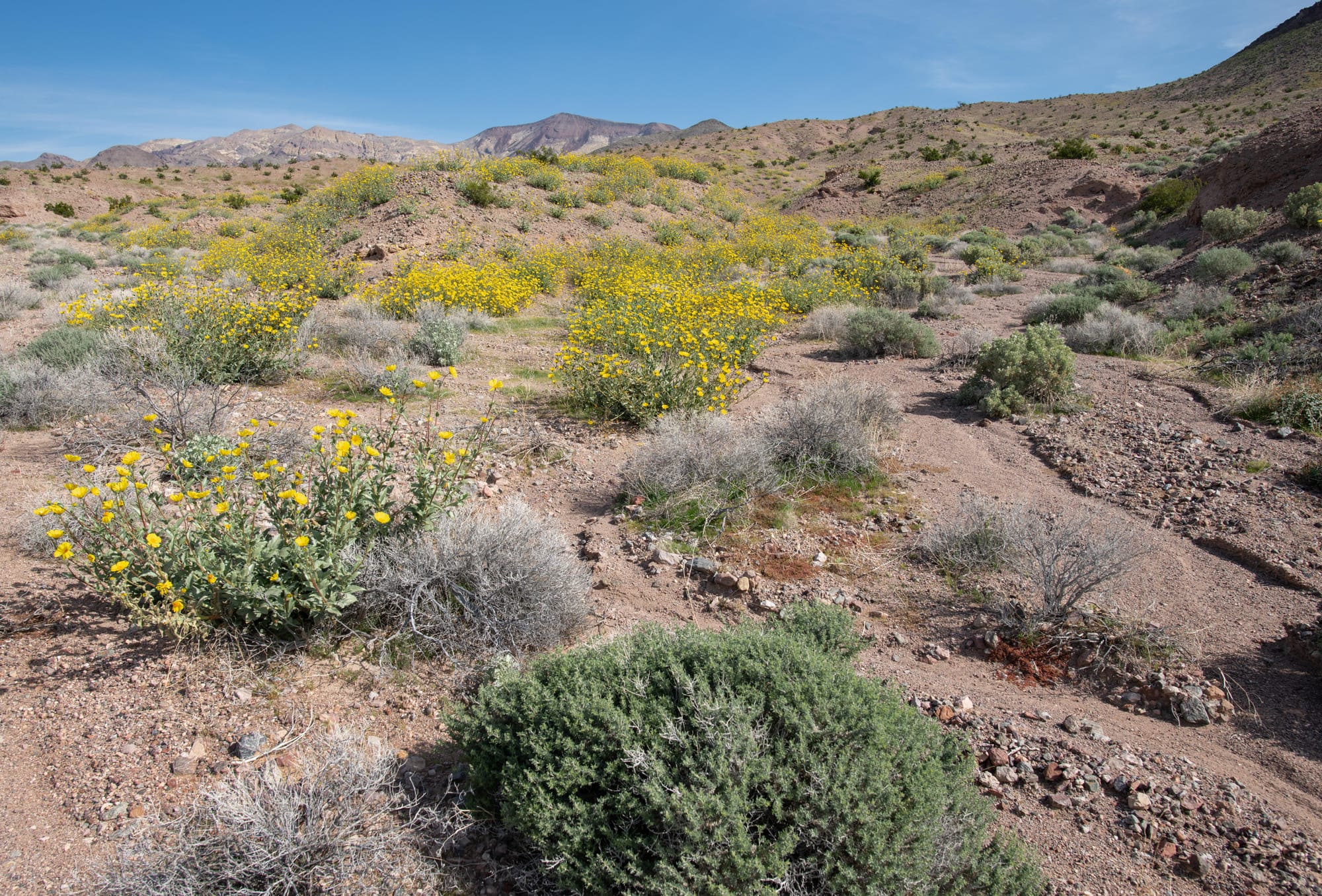
When I first visited the Graham Mine in late March 2010, a borderline super bloom year, the greenery and wildflowers were stunning. When I returned in March 2022, after a very dry winter, it looked more like autumn than spring. This is a long hike; you will want the longer days of spring to have enough time to see everything. There is very little shade anywhere on the hike. Therefore, I recommend doing the hike in mid-March, which gives the best combination of longer days, moderate temperatures, and good wildflowers in wetter years.

